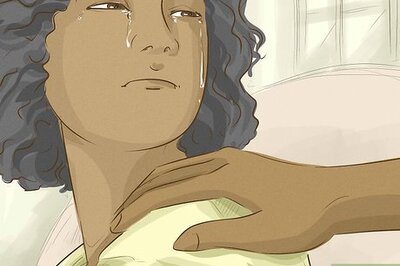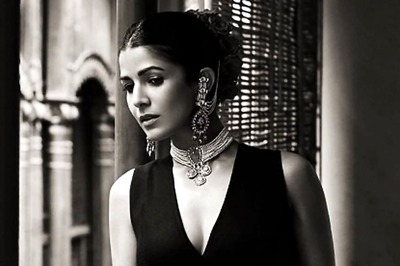
views
7 Types of Characters in Literature
Protagonist The protagonist is the main or central character of the story. They drive the plot forward, face obstacles, and go through a major change. Protagonists bridge the gap between the audience and the story, and require creating a detailed character profile. They are traditionally the hero, but can also appear as an antihero, who lacks conventional heroic traits. Traits: Evoke empathy from the reader, goal-driven, and changeable Examples: Holden Caulfield (The Catcher in the Rye); Atticus Finch (To Kill a Mockingbird); Harry Potter (Harry Potter series) Curious to know what type of protagonist you are? Taking our “What Main Character Type Am I” quiz to find out!
Antagonist Antagonists are the opponent or enemy of the protagonist. They pose different kinds of threats to the goals of the protagonist. Antagonists can be a person or a group of people who create conflict for the protagonist. Some stories include antagonists that are situations or events instead of characters. Traits: Creates conflict and tension, an active part of the story, driven by personal motivations Examples: Sauron (Lord of the Rings); Captain Hook (Peter Pan) Antagonists are usually the villain, but can also appear as an anti-villain, who has some heroic qualities or motivations.
Deuteragonists This character(s) is not the main character, but stays close to the action of the plot. They can appear as friends, partners, or even enemies, and are thought of as the 2nd most important character in the story. Deuteragonists have their own character arc within the narrative. Traits: Complex backstories and motivations, unique POV Examples: Jim (The Adventures of Huckleberry Finn); Hermione Granger (Harry Potter series)
Tertiary characters Tertiary characters appear here and there throughout a story, but don’t impact the main character directly, although they can advance the plot. They’re still important to the background in that they flesh out the world within the narrative. Traits: Limited roles, quirky or funny Examples: Father Zosima (The Brothers Karamazov); Albus Dumbledore (Harry Potter series)
Foil Foil characters offer a contrast to the protagonist, but not as clearly as antagonists do. In doing so, they highlight certain traits of the protagonist along the way. They may clash or become friends with the main character. Traits: Conflicting traits, deepens character development Examples: Mercutio (Romeo & Juliet); Draco Malfoy (Harry Potter series)
Love Interest The love interest is the central romantic focus of the main character in a story. They provide a catalyst for the hero or protagonist’s journey, as well as the plot. The love interest can elicit a positive or negative reaction in the main character, which you can decide when creating a fictional character from scratch who is a love interest. Traits: Provides emotional experience for the main character; dynamic; sometimes flawed Examples: Mr. Darcy (Pride and Prejudice); Peeta Mellark (The Hunger Games)
Confidant A confidant can come in the form of a sidekick, partner, or best friend to the main character. They often provide support and guidance to the protagonist, as well as some humor. Traits: Provides a source of strength, advice, and trust Examples: Samwise Gamgee (The Lord of the Rings); Horatio (Hamlet)
5 Types of Character Functions
Dynamic Dynamic characters change along the course of the story. They may evolve in a positive way, but it’s also possible for a dynamic character to become dark or negative throughout the story. Dynamic characters can be associated with the protagonist or the antagonist. Traits: Change in personality or values, sometimes unpredictable, and impacts the story Examples: Scout Finch (To Kill a Mockingbird); Elizabeth Bennet (Pride and Prejudice); Aragorn (The Lord of the Rings).
Round A round character changes throughout the story, but isn’t the same as a dynamic character. The difference is that round characters have a complete backstory and very particular reasons for their behavior. Most protagonists tend to be both dynamic and round, which makes it easier to create a more realistic fiction character. Traits: Complex, well-developed, nuanced Examples: Jane Eyre (Jane Eyre); Rhett Butler (Gone With The Wind); Frodo Baggins (The Lord of the Rings)
Static A static character in a story doesn’t change. They tend to be unlikable, but not always. A static character doesn’t have to be flat—they can be well developed even if they don’t change throughout the story. Traits: Consistent, doesn’t change Examples: Captain Hook (Peter Pan); Shrek (Shrek)
Flat A flat character is one-dimensional and lacks nuance and complexity. They contribute to the flow of the story, but, like the static character, don’t change; they can also be known as stock characters. Traits: One-dimensional, predictable, often stereotypical Examples: Mr. Collins (Pride & Prejudice); Sykes (Oliver Twist); Gale Hawthorne (The Hunger Games)
Symbolic Symbolic characters stand for something that connects to the message of the narrative. The trajectory of a symbolic character isn’t always clear until the end of the story. They can reveal bigger ideas or concepts, so there aren’t usually many of them in a story. Traits: Symbolizes themes and messages, conveys deeper meanings Examples: Aslan (The Chronicles of Narnia); Hester Prynne (The Scarlet Letter); Katniss Everdeen (The Hunger Games)
22 Character Archetypes
The Hero The hero is the ultimate protagonist character who is on some kind of a quest. Heroes tend to stand up for what is right and bring the audience with them on their journey. Traits: Courage, resilience, morality Examples: Walter Mitty (The Secret Life Of Walter Mitty); Jay Gatsby (The Great Gatsby); Samwise Gamgee (The Lord of the Rings)
The Shadow The shadow character reflects the darker, sometimes repressed, parts of a character. Shadows often appear as the villain or the mentor to provide conflict in the story and challenge the hero. Traits: Repressed, evil figure with psychological depth Examples: Voldemort (Harry Potter series); Cathy Ames (East of Eden) The shadow is also a concept in Jungian psychology used for the darker, often hidden side of the self.
The Sidekick The sidekick assists or accompanies the hero or main character of the story. They offer support and provide companionship, and sometimes appear as a jester-like character, or one who has a sense of humor. Sidekicks can be robots, humans, or supernatural creatures. Traits: Loyal, supportive, humorous Examples: Ron Weasley (Harry Potter series); Tinkerbell (Peter Pan)
The Villain The villain is the flip side of the hero and has negative or malevolent intentions. They can be just as goal-oriented as the hero, but with different goals. Villains are complex characters who often have their own unique motivations. Traits: Selfish, immoral, manipulative, cruel Examples: Professor Moriarty (Sherlock Holmes); Draco Malfoy (Harry Potter series)
The Lover The lover’s role in a story is to have a meaningful relationship with others. They’re known to be idealists, dreamers, and optimistic, although their character arc doesn’t always have a happy ending. Traits: Romantic, idealistic, sometimes unrealistic Examples: Beatrice (Much Ado About Nothing); Arwen (The Lord of the Rings)
The Mentor Mentors possess special knowledge that they pass onto other characters to help them on their journey. They’re a popular character type in science fiction and fantasy novels. Their arc is small, but they have a big impact on others in the story. Traits: Wise, knowledgeable, experienced Examples: Merlin (Arthurian Legends); Gandalf (The Lord of the Rings)
The Mother The role of the mother archetype is to take care of those around them and put their needs before her own. The mother is very understanding of human nature and offers assistance, support, and guidance to those she cares about. Traits: Nurturing, caring, protective Examples: Molly Weasley (Harry Potter series); Marmee (Little Women)
The Everyman The everyman character is a regular person who experiences extraordinary events. They’re similar to the innocent type, but they are more capable of handling the situation. Traits: Humble, relatable, empathic Examples: Bilbo Baggins (The Hobbit); Arthur Dent (The Hitchhiker's Guide to the Galaxy)
The Damsel The damsel often appears as “damsel in distress” in stories, since their role tends to put them in helpless situations. They’re known for their virtue and often have a high social status (princess, noblewoman). If you described a character who is a damsel, you’d likely think about why she’s in a helpless situation and what or who she needs to save her; a damsel can also be a man, child, or other being, depending on the story you’re telling. Traits: Beautiful, popular, vulnerable Examples: Mrs. de Winter (Rebecca); Dora Copperfield (David Copperfield); Rapunzel (Rapunzel)
The Trickster A trickster character exists to bring unexpected disruption to a story, usually through rule-breaking and humor. You can create good personalities for tricksters, as they are considered subversive and playful; tricksters can also be self-centered in their actions. Traits: Cunning, self-centered, mischievous Examples: The Cheshire Cat (Alice's Adventures in Wonderland); Puck (A Midsummer Night’s Dream)
The Guardian The guardian is a protective character that guides the main character or protagonist along on their journey. They’re seen as emblems of wisdom and morality as they test the hero, either by assisting them or being an obstacle to their goal. Traits: Protective, mentoring, practical Examples: The Troll (The Hobbit); Gollum (The Lord of the Rings)
The Herald The herald’s job is to tell or show the audience that something in the story or plot is about to change, often at the point when the inciting incident is about to occur. They can be a character, but can also appear as an event or an item. Traits: Initiates change, acts as a call to adventure Examples: The White Rabbit (Alice's Adventures in Wonderland); Jacob Marley (A Christmas Carol); Hagrid (Harry Potter series)
The Scapegoat The scapegoat is the character that others blame for a failure happening around them. They end up feeling marginalized and misunderstood for something they may have nothing to do with. Traits: Unconventional, sensitive, defiant Examples: Hester Prynne (The Scarlet Letter); The Tributes (The Hunger Games)
The Outlaw The outlaw character’s role is to challenge the status quo in a story. They have a strong sense of freedom and are driven by an even stronger sense of justice. The difference between an outlaw and a rebel character is that the outlaw actually breaks the law; rebels want to change the system, while outlaws are more focused on their own survival. Traits: Independent, risk-takers, leaders Examples: Robin Hood (The Merry Adventures of Robin Hood); John Proctor (The Crucible); Sirius Black (Harry Potter series)
The Rebel A rebel character lives life by their own rules and is often a dramatic, revolutionary type that wants to overthrow a system in the world of the story that isn’t working. Traits: Disruptive, unconventional, independent Examples: Atticus Finch (To Kill a Mockingbird); Tom Sawyer (The Adventures of Tom Sawyer); Morgoth (The Lord of the Rings)
The Ruler The ruler is in control of everything around them. They try their best to run their family, community, or society according to their own rulebook. Rulers are naturally leaders who are focused on order in every part of their lives. Traits: Confident, strategic, decisive Examples: King Arthur (The Chronicles of King Arthur); Claude Frollo (The Hunchback of Notre Dame); Coriolanus Snow (The Hunger Games)
The Magician The magician is a dreamer who applies their skills and know-how to make dreams become a reality for those in the story. They can make well-informed decisions and understand complex concepts, and can also use their power to destroy. Traits: Creative, intelligent, resourceful Examples: Sherlock Holmes (Sherlock Holmes books); Severus Snape (Harry Potter series)
The Warrior The warrior sets goals, overcomes obstacles, and shows perseverance and determination in their journey. They have a strong sense of purpose and are committed to what they believe in. Traits: Courage, discipline, drive Examples: Aragorn (The Lord of the Rings); Odysseus (The Odyssey)
The Sage The sage is a wise person or being that seeks knowledge in a story by analyzing what is in front of them. A sage character can be a mentor, but doesn’t share all of the same characteristics. Traits: Intelligent, knowledgeable, benevolent Examples: Prospero (The Tempest); Albus Dumbledore (Harry Potter series)
The Innocent The innocent is a character who is generally happy and doesn’t seek to harm or affect others negatively. They feel familiar and down-to-earth while trying to connect to other characters. Traits: Familiar, relatable, trusting Examples: Anne Shirley (Anne of Green Gables); Lennie Small (Of Mice and Men); Rue (Hunger Games)
The Creator The creator believes in creativity, above all else. When developing a character for a story like a creator, their traits can intersect with plotlines, ideas, or themes that help the main characters reach their goals more easily. Traits: Drive to create, innovative, expressive Examples: Dr. Victor Frankenstein (Frankenstein); Eru Ilúvatar (The Lord of the Rings)
The Caregiver The caregiver is generous to others and helps take care of characters, either physically or emotionally. Caregivers often experience martyrdom and are known for their selfless qualities. Traits: Empathic, self-sacrificing, optimistic Examples: Beth March (Little Women); Calpurnia (To Kill a Mockingbird); Rubeus Hagrid (Harry Potter series)
Why do characters matter in a story?
Characters drive the plot of the story. Their actions, motivations, and relationships help progress the story forward. This occurs when characters are in conflict and resolution. Creating relatable characters who aren’t too extreme or too flat makes it easier for readers to follow along and be invested in the plot. Characters are the reason why the conflict or tension within a story can escalate and build into a climax. Faulkner notes that “the most important thing about a character is for the author to know what drives that character, what motivates the character, and what the character's desire is. What is standing between the character's desire and achieving that desire? A story is desire in conflict.”
They connect the reader to the narrative. Different characters provide the emotional link readers need to understand the story and show them how to feel from plot point to plot point. Relatable characters who are easy to understand provide a lens for the reader to hop into the story and experience it for themselves. Characters also assist readers to better understand themselves through the narrative they’re a part of. Faulkner suggests asking the following questions of your main characters: “Are they powerful in the world? Are they weak in the world? Do they make themselves vulnerable? Are they invulnerable?”
Characters also support the theme. The way that characters develop throughout a story and take part in the plot can help reveal thematic ideas like love, injustice, or family strife. The characters’ relationships, motivations, actions, and the lessons that they learn by the end of the story allow the reader to better understand the underlying ideas and concepts that the author is trying to express.
How many characters should a story have?
The number of characters in a story depends on what the story needs. There is no exact number of characters that a story needs, but generally speaking, a short story can include 2-5 main characters, while a larger, more complex, or epic story can have about 20-30 characters total. It’s a good idea to write out a character sketch, which can help you formulate their individual personalities, roles, and actions. Having fewer main characters is a good way to keep the story focused and prevent it from being confusing to the reader. Stories presenting multiple perspectives also mean you have a larger number of main characters. There is technically no limit to supporting characters, but each one should serve a purpose and not simply exist. Hay recommends writing non-stereotypical characters. “If you want to avoid stereotypes and actually embrace diversity, then look at what's been done before, and also look at all the stereotypes that society says exist. Work out what those stereotypes are and then twist them.”



















Comments
0 comment